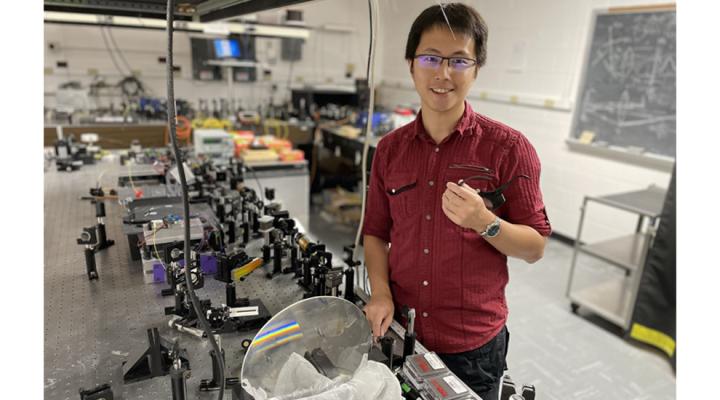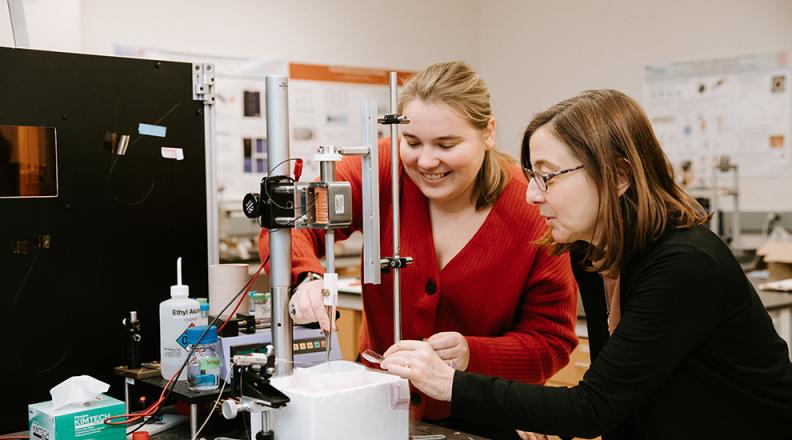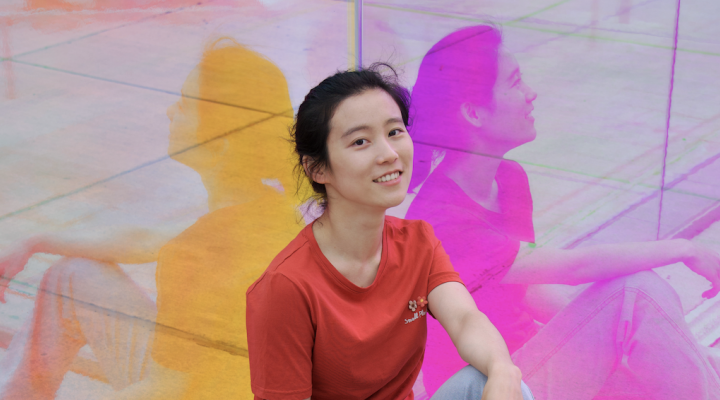Kara Zielinski is a 4th-year Ph.D. student who is working to better understand life’s essential processes by developing technology to capture interactions between biological molecules. She is a member of Professor Lois Pollack’s lab.
Zielinski spends a typical day in the lab building microfluidic mixing devices. When combined with high-energy X-rays (like the ones produced at CHESS, the Cornell High-Energy Synchrotron Source), these devices can be used to monitor biological reactions. She spends a lot of time customizing her mixers and the associated hardware to be compatible with every experiment—from both biological and X-ray perspectives. This includes thinking through every tiny detail of the experiment and rigorously testing every aspect.
Recently, Zielinski used her mixers to capture a protein binding to its substrate, resolving a decades-long dispute about this important protein’s function, and she foresees other applications in the future. “My research is broadly applicable,” Zielinski notes. “We can use our technology to study endless biological systems and there is always a new topic to explore. That’s exciting.”
Zielinski first became interested in physics when she was in high school and realized that math and physics could be used to explain all natural phenomena, including life’s essential processes. She was drawn to Cornell because of the resources and opportunities available to her. “When I realized I could actually use my data to ‘watch’ real reactions, and that I would have regular access to CHESS, I knew it was an opportunity that I had to take,” she said.
“Everyone at Cornell is excited about their research, and willing to share ideas, supplies, and equipment,” Zielinski added. “People across disciplines just want to talk to each other and see what you’re working on. More often than not, these conversations can lead to new ideas and collaborations.”
Zielinski appreciates the vibrant graduate community, and the opportunities available to socialize and get to know students in other labs. Her advice to new Ph.D.s is to stay open-minded and look for ways to combine topics—even those that seem unrelated. “Some of the most exciting research is interdisciplinary and allows for brand-new technologies to study scientific problems in new ways,” she said.
In her limited spare time, Zielinski enjoys exploring small towns and restaurants throughout the Finger Lakes region. After graduation, she plans to continue academic research as a postdoc.
Photo: Kara Zielinski (left) and Lois Pollack (right) align a gas dynamic virtual nozzle stream to a target. Photo by Allison Usavage.




